KONOPÁSEK, Z. (2024 - v tisku): Sbohem příteli, naše cesty se rozešly: O interpretativní analýze, počítačích a programu ATLAS.ti. Biograf (78), 56 odst. Dostupné na adrese http://www.biograf.org/
::::Diskutuji současné trendy v používání počítačů při analýze kvalitativních dat, zejména zavádění umělé inteligence (AI). Zaměřuji se přitom především na program ATLAS.ti. V rámci závodů, který z CAQDAS programů nabídne lepší využití AI, jsou osvědčené metodologické postupy těchto programů nenápadně, ale možná nenávratně vytlačovány technicky zaměřenými novinkami, které zatím přinášejí jen velmi nejisté výsledky. Příkladem budiž filtr úryvků podle toho, zda jsou komentované, který se nedávno z programu ATLAS.ti vytratil. Vysvětluji zásadní důležitost tohoto filtrování. Ukazuji analytický postup jako specifické praktiky čtení/psaní a kritizuji přehnaný důraz na kódování v kvalitativní analýze.
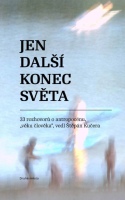
KONOPÁSEK, Z. (2024): Ať spolu vědci dál nesouhlasí. In: Š. Kučera, ed: Jen další konec světa: 33 rozhovorů o antropocénu, "věku člověka", vedl Štěpán Kučera. Brno: Druhé město. Str. 116-122
::::Bojí se sloni smrti? Cítí stromy bolest? Proč si tak rádi vyprávíme o koncích světa? Proč náš jazyk nestačí k popsání výzev dnešní doby? A jakou roli v tom všem hrají vědci? I takové otázky pokládal spisovatel a novinář Štěpán Kučera v rozhovorech, které vycházely od roku 2017 v Salonu Práva.
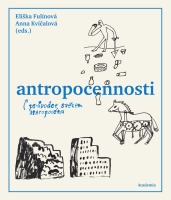
KONOPÁSEK, Z. & ŘÍHA, C. (2024): Letáčky. In: E. Fulínová & A. Kvíčalová, ed: Antropocennosti: Malý průvodce světem antropocénu. Praha: Academia. Str. 73-83
::::Letáčky CHKO nejsou žádná antropocénní ikona, přesto o tomto fenoménu vypovídají. Ukazují, že nežijeme jen v době bezprecedentního ničení přírody, krajiny či kulturních památek, ale také dosud nebývalých ochranných opatření. Nejde přitom jen o akci a reakci. Nerozšiřuje se totiž jen počet chráněných exemplářů, lokalit, ale i typů toho, co předmětem ochrany je. Přitom se zvyšuje naléhavost otázky, co vlastně chráníme a před kým. Antropocén je nejen fyzický stav současného světa, ale i způsob, jak o něm mluvíme. K jeho charakteristice patří jak obecně to, že o něm čím dál více uvažujeme v režimu ochrany, regulace, tak i to, na co konkrétně je tato ochrana zaměřena.
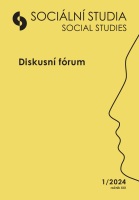
KONOPÁSEK, Z. (2024): Věda a politika, vpravo, vlevo. Sociální studia, 21 (1): 33-38. Dostupné na adrese: https://doi.org/10.5817/SOC2023-33647
::::Pavel Barša svůj text "Pragmatická sociologie emancipace: Latour vs. Boltanski" pointuje úvahami o tom, že Latourovi není blízká ani revoluční levice, ani krajní konzervatismus. Pomáhá si přitom zejména tím, že ho brání před tím, co jsem nedávno napsal o jedné Latourově knize. Podle Barši v tomto textu Latourovi vyčítám jeho politické angažmá. Kritizuji ho za příklon k levici a odkazuji ho do sféry čisté, akademické vědy. Avšak přestřelil jsem prý… Problém je v tom, že mi Barša vkládá do úst, co jsem nikdy neřekl. Latourovi jsem nikdy nevyčítal politický rozměr jeho textů. Už vůbec jsem mu nevyčítal levicovost. A rozhodně mi nejde o to ho „skolit“. Ještě bizarnější ale je, že ten, kdo mi falešně podsouvá kritiku Latoura kvůli tomu, že se ukázal jako „levičák“, mne otevřeně kritizuje kvůli tomu, že jsem se ukázal jako „pravičák“ (je to totiž právě tahle škatulka, která dle Barši vysvětluje moje omyly a mou údajnou nenávist vůči Latourovi). V textu se snažím obhájit, že cit pro jemnost a ambivalence není nic výlučně akademického a že „relativistické“ uvažování je ještě něco jiného než jen výhodné palivo pro konzervativní agendu (jak naznačuje Barša).
KONOPÁSEK, Z. (2023): aTrain, převod nahrávek mluvené řeči na text s využitím AI. Biograf (77), 21 odst. Dostupné na adrese http://www.biograf.org/clanek.html?id=1109
::::Představuji nový program vhodný pro kvalitativní výzkumníky, který automaticky přepisuje nahrávky do textu. Využívá k tomu transkripční model Whisper z dílny OpenAI. Přepisy citlivě vyvažují přesnost a čitelnost, kvalitou předčí výsledky práce většiny najatých lidských přepisovačů. Zvláštní výhodou pro kvalitativní výzkum je, že program neposílá data nikam ke zpracování; vše se odehrává na lokálním počítači.
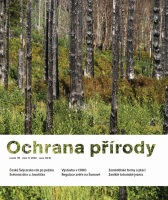
PRACH, J. / KONOPÁSEK, Z. / ŘÍHA, C. (2023): Jak stavět v krajině: Návrh webové aplikace na podporu usměrňování stavební činnosti v CHKO. Ochrana přírody, 78 (6): 26-29. Dostupné na adrese https://www.casopis.ochranaprirody.cz/
::::Regulace výstavby v chráněných územích s cílem zachování krajinného rázu je důležitou agendou orgánů ochrany přírody. Agenda vyvolává mezi občanem-stavebníkem a úřadem řadu pnutí. V článku přinášíme výsledky projektu TAČR, který jsme představili před dvěma lety. Výstupem projektu je webová aplikace, která místní kvality krajinného rázu a principy, resp. regulativy z nich plynoucí, pojednává kontextově citlivým způsobem a přístupnou formou. Vychází z Preventivních studií hodnocení krajinného rázu, která AOPK ČR pro jednotlivé CHKO pořizuje. Webové rozhraní umožňuje generovat tisknutelný dokument přímo na míru. Aplikace by měla přispět k lepšímu pochopení diferencovaného přístupu – proč je obdobný stavební záměr v některých částech CHKO nežádoucí a v jiných částech CHKO nepředstavuje problém.
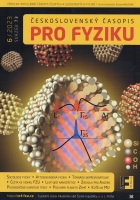
KONOPÁSEK, Z. / MARŠÁLEK, J. / HADWIGER ZÁMEČNÍK, L. (2023): Jednička z nejistoty? Sociologie fyziky před tabulí. Československý časopis pro fyziku, 73 (6): 432-437
::::V tomto posledním textu naší série věnované sociologii vědeckého poznání (a poznání fyzikálního zvláště) se přimlouváme za to, aby důraz Science Studies na porozumění vědecké praxi pronikal do školního vědeckého vzdělávání. Vysvětlujeme, že jakési popisování vědecké praxe v sobě zahrnuje i klasická výuka zaměřená na předávání fyzikálních poznatků. Problém je, že se tak děje většinou bezděčně a že tyto popisy nejsou zrovna realistické - neodpovídají tomu, co o kolektivní vědecké praxi díky sociologii vědy víme. Upozorňujeme dále, že ne každá podoba sociologie vědy nám může v tomto ohledu pomoci. To ukazujeme na příkladu debat o Science Education v USA. V několika příkladech naznačujeme možnosti, jak ve výuce pro sociologickou reflexi vědecké praxe otevřít prostor.
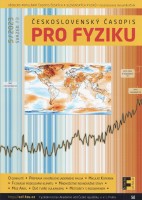
KONOPÁSEK, Z. / MARŠÁLEK, J. / HADWIGER ZÁMEČNÍK, L. (2023): Jak myslí věda? O vědecké genialitě sociologicky. Československý časopis pro fyziku, 73 (5): 346-349
::::Tento text se věnuje klasické postavě historie vědy, jíž je geniální vědec. Sociologie velmi brzy nabídla svůj vlastní výklad toho, kým je vlastně vědecký génius, kterého měla tendenci na jedné straně ctít (nebude tedy velkým postavám dějin vědy upírat jejich velikost) a na druhé straně „vracet na zem“ („génius“ nebude v jejím podání vyvázán z řádného fungování vědy). Z pozdější sociologie vědeckého poznání se geniální vědec takřka vytratí, a to ve prospěch vědeckého kolektivu, komunity, či dokonce „superorganismu“. Šířeji se v tomto textu věnujeme vědeckému úspěchu, ale také vědecké racionalitě, kterou sociologie nepřisuzuje výjimečnému typu „myšlení“ vědců, nýbrž vědecké praxi.
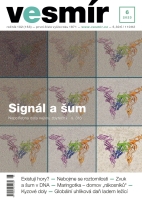
KONOPÁSEK, Z. (2023): Globální uhlíková daň ladem ležící: K politickému rozměru tzv. nepolitických řešení. Vesmír, 102 (6)
::::Jedním z návrhů, kterak přistoupit k řešení tzv. klimatické krize, je globální uhlíková daň. Vypadá na první pohled jako zázračně jednoduchý a soběstačný nástroj. Přesto budí překvapivě málo pozornosti. Je tomu tak (mimo jiné) proto , že se prosazuje jako vyhroceně nepolitické řešení, a to nejen prvoplánově, tedy v tom smyslu, v jakém to sami autoři tohoto konceptu přiznávají. Protože dnešní doba k nejrůznějším deklarovaně nepolitickým řešením obecně tíhne, často pod tlakem existenčního ohrožení a s oporou ve vědecké argumentaci, vyplatí se případ GUD globální uhlíkové daně podrobněji prozkoumat.
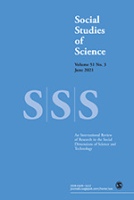
NELSON, Nicole C. / TIMMERMANS, Stefan / WARWICK, Andrew / KONOPÁSEK, Zdeněk / VANCE, Russell E / KUO, Wen-Hua (2023): On first reading Bruno Latour. Social Studies of Science, 53 (2): 174-179
::::Příspěvky pro speciální číslo časopisu věnované Bruno Latourovi, který zemřel v říjnu 2022.
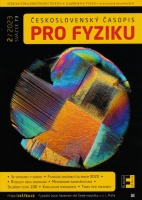
KONOPÁSEK, Z. / MARŠÁLEK, J. (2023): Se sociology v zádech:
laboratoře, texty, teorie. Československý časopis pro fyziku, 73 (2): 102-106
::::Poté, co jsme se v minulém textu zabývali vědeckými kontroverzemi, nyní se zaměříme na některá další "místa", z nichž se sociologové pokoušeli uchopit vědu jako předmět svého zkoumání. Nejprve si ukážeme, co přinesly takzvané "laboratorní etnografie", zaměřené na každodenní vědeckou praxi. Za druhé se budeme zabývat tím, proč je důležité věnovat pozornost vědeckému jazyku a vědeckému diskurzu. A nakonec představíme několik vzácných příkladů sociologického zkoumání teoretické práce, tj. činnosti, při které se zdá, že se toho mimo nepřístupnou vědeckou mysl děje jen málo. V této souvislosti poukazujeme na to, že sociologie, stejně jako jiné disciplíny, různým způsobem utváří předmět svého výzkumu podle svých potřeb a zároveň se v interakci s ním proměňuje.
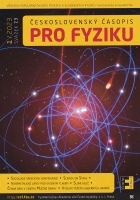
KONOPÁSEK, Z. / MARŠÁLEK, J. (2023): Když se dva hádají, třetí... pozoruje: Sociologické studium vědeckých kontroverzí. Československý časopis pro fyziku, 73 (1): 4-7
::::Toto je druhý z šesti plánovaných textů o sociologii vědy a vědeckého poznávání (a o tzv. science studies obecně). Proč se vlastně vědecké rozepře tak často stávaly předmětem zájmu sociologů? Vysvětlujeme důležitost a metodologické souvislosti tohoto empirického programu. Poté zvláštnosti tohoto přístupu krátce diskutujeme s odkazem na práci, ve které Trevor Pinch studoval experimenty R. Davise, týkající se slunečních neutrin. Ukazujeme, že vědecké kontroverze nabízejí sociálním vědcům důležité východisko k výzkumu vědecké praxe a její mnohotvárnosti, tedy té kvality, která má sklon stávat se neviditelnou, jakmile se vědecké fakty konsolidují.
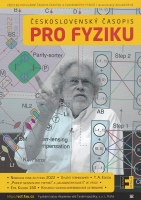
MARŠÁLEK, J. / KONOPÁSEK, Z. / HADWIGER ZÁMEČNÍK, L. (2022): Kolik fyziky se vejde do vývěvy (a co všechno do fyziky)? Československý časopis pro fyziku, 72 (6): 424-426
::::Fyzika je možná tím nejvíce probádaným vědním oborem v tzv. sociálních studiích vědy. Cílem tohoto krátkého textu je načrtnout prostor, ve kterém se sociologie fyziky - a šířeji Science Studies - pohybuje a ve kterém se v chystaných šesti dílech série přehledových textů budeme převážně pohybovat i my.
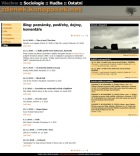
Toto je něco jako doprovodný text k jinému mému textu ("Věda a politika, vpravo, vlevo", v tisku). Zatímco je možné oba tyto dokumenty číst nezávisle na sobě, nedává moc smysl číst zde předkládaný text bez předchozího přečtení jiného článku, na který oba zmíněné texty reagují, a sice Baršova elaborátu o Bruno Latourovi a o mém vztahu k němu ("Pragmatická sociologie emancipace: Latour vs. Boltanski", v tisku). Zatímco v článku "Věda a politika, vpravo, vlevo" polemizuji s tím, jak si Barša představuje političnost a angažovanost vědy, zde jen poměrně „technicky“ řeším řadu jednotlivých nesmyslů, které Barša vrší na moje konto: ukazuji, v čem a jak ulítl. Krátce, ve všem. Vymýšlí si a do úst mi vkládá blbosti.
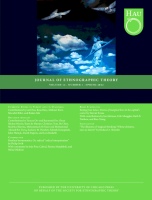
KONOPÁSEK, Z. (2022): Religion in action: How Marian apparitions may become true. HAU: Journal of Ethnographic Theory, 12 (1): 170–183
::::According to Latour, religion and science have nothing in common. The two are successful (or failing) in quite different ways. Religiousness is not aimed at fact-making, but at presence-making, he says. To critically reconsider these ideas, I discuss the case study of Marian apparitions in Litmanová. The study suggests a more complicated picture by not focusing on pure and ready-made religion, but rather on religion in the making, a kind of “almost-religion.” It shows how the reality of apparitions, initially of quite unclear status, was becoming more and more religious. Fact-making and fact-checking clearly belonged to this trajectory and have never stopped being relevant. Nonethless, together with how the apparition was progressively becoming truly religious (or religiously true), Latourian presence-making was gaining in importance.

 ? - recenze vyjde v časopise Biograf
? - recenze vyjde v časopise Biograf
 se objevily informace o tom, co lze snad prý během března čekat v nové, sedmé verzi mého oblíbeného analytického programu
se objevily informace o tom, co lze snad prý během března čekat v nové, sedmé verzi mého oblíbeného analytického programu












